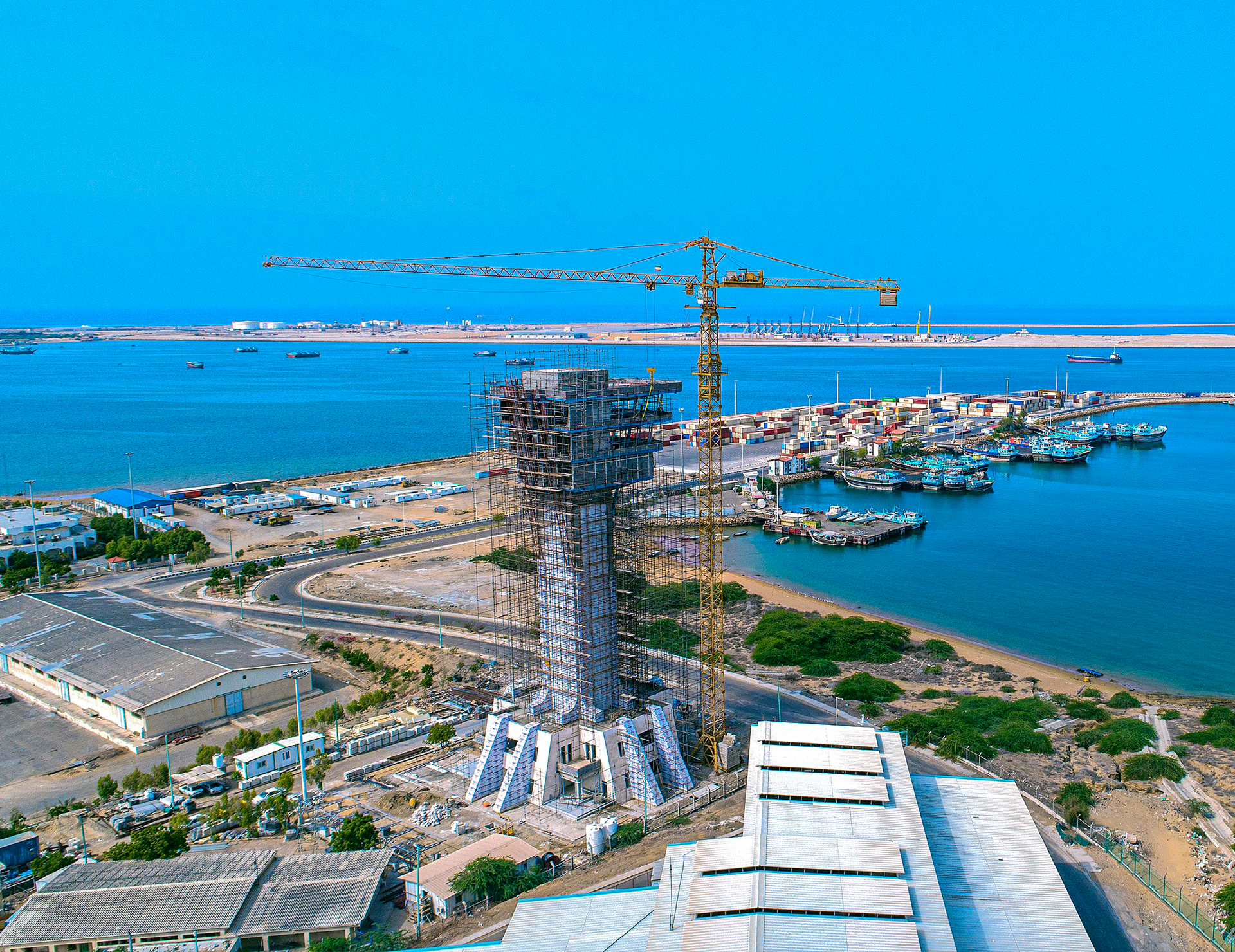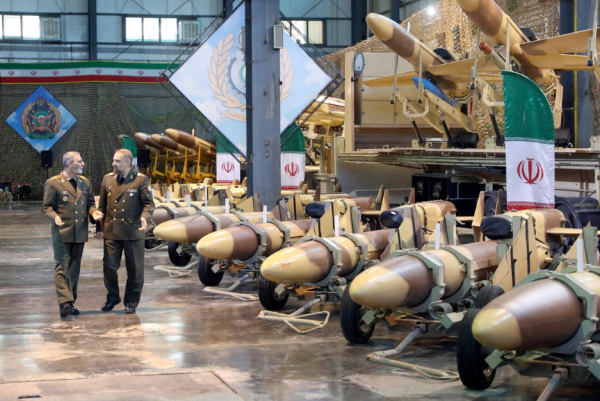India-Iran Chabahar deal: implications for the South Caucasus

On May 13, India signed a 10-year agreement with Iran to develop and operate the port of Chabahar on Iran’s south-eastern coast along the Gulf of Oman. The deal has been long in the making as New Delhi has sought viable transport routes to Europe, Central Asia, and the Middle East that bypass its regional rival Pakistan and help it counter China’s growing clout in Asia-to-Europe connectivity. Chabahar’s gradual integration into regional supply chains means India can to a certain extent cut risks emanating from the destabilization of the trade route passing through the Suez Canal and gain a convenient springboard for access to critical markets in the north.
The South Caucasus countries stand to gain economically from this north-south connectivity as it is now strongly embraced by Russia and Iran, too, especially after the former’s growing economic isolation in the Baltic and Black Sea basins post-Ukraine. It surely offers Armenia, Azerbaijan, and Georgia opportunities to leverage their pivotal location to diversify their international linkages in an increasingly fractured world order. Yet, revamping the north-south corridor with bigger Indian involvement will not only bring economic dividends but will also further expose the South Caucasus to geopolitical upheavals in the Middle East and South Asia. New Delhi’s recent attempts to fill Armenia’s security vacuum through weapons exports and deepening defense partnerships have already stirred concerns in Baku that India’s growing outreach to the region could come at the expense of its regional interests.
Chabahar deal completes the circle of major stakeholder commitment to the International North-South Transport Corridor (INSTC) as all three founding states - Russia, Iran, and India - now financially committed themselves to moving away key bottlenecks. In May 2023, Russia and Iran signed an agreement to resume the construction of the Rasht-Astara railroad, the major missing link on the route. Accordingly, Russia will invest $1.6 billion on the project that will ease the transfer of cargo moving from Chabahar or Bandar Abbas to Azerbaijani railroads on the way to Saint Petersburg. The Iranian side says the construction process will start soon and is expected to finish by 2028. Baku and Tehran recently opened a highway bridge and modular border checkpoint on the state borders along the Astarachay River.
Works are also underway on establishing the Aras Corridor to connect Azerbaijan’s newly regained territories with its Nakhchivan exclave through Iranian territory by rail and road. This project offers an alternative rail route to link Iranian ports with Russian railways, thus enhancing the transit capacity of the INSTC. According to some accounts, the realization of the Aras Corridor looks more real than the Rasht-Astara railroad due to geographical barriers and higher financial costs associated with the latter. Even if Russia has been adamant in pushing the project forward, it is still questionable if Moscow will afford the payment as the ongoing war in Ukraine continues to drain Russian coffers.
Azerbaijan has been modernizing its domestic railway system to meet the rising demand from the INSTC which will get a new boost after the Chabahar deal. The government recently adopted an Action Plan for 2024-2026 to increase the transit potential of international transport corridors passing through Azerbaijan. With that in mind, Azerbaijan Railways (ADY) started modernizing the two major sections of the north-south route - the Alat-Astara and the Sumgait-Yalama railroads. Railway border crossing points with Russia and Iran are also being modernized to provide smooth transfer of cargo from Iranian ports. In May, ADY completed the reconstruction of a rail cargo terminal in Astara that will ensure growing trans-shipments along the INSTC.
Viable north-south connectivity enhances Azerbaijan’s geopolitical importance for different power centers, especially the ones it had bumpy relations in recent years. After Ukraine-related sanctions, Russia came to see Azerbaijan as a reliable transit partner to reach Turkey, Iran, and India to diversify its economic ties away from dependence on Western markets, consequently giving Baku levers to influence Moscow’s South Caucasus policy. Though some Azerbaijani moves shook the foundations of Russian presence in the region, Moscow does not have the luxury to alienate a strategic partner located on the intersection of valuable east-west and north-south transport corridors. Secondly, deepening trade ties and hence mutual interdependence of sorts with Iran and India within the INSTC may help Baku delay the crystallization of the Armenia-Iran-India axis in the coming years. Azerbaijan’s relatively more developed railroad infrastructure and its integration into regional railway networks give it a comparative advantage over Armenia in economic engagements with India and Iran. Thirdly, the region’s gradual incorporation into north-south supply chains complements Azerbaijan’s growing role as a key transit hub within the Trans-Caspian route connecting China with the EU. Amid the looming infrastructure competition, it endows Baku with serious geoeconomic capital to diversify its economy and forge sustainable partnerships in an increasingly multipolar neighborhood.
Yet, even if Chabahar’s development looks good for Azerbaijan’s regional designs, it also comes with some caveats that Baku will need to ponder to adjust its policies accordingly. Firstly, Indian officials’ statements about the port’s future place in the country’s regional strategy put specific emphasis on its advantages for giving New Delhi access to Afghanistan and Central Asia, though its importance for the INSTC is also noted. In the opening ceremony, India’s Shipping Minister Sarbananda Sonowal said Chabahar’s significance “transcends its role as a mere conduit between India and Iran; it serves as a vital trade artery connecting India with Afghanistan and Central Asia”. In 2018, the U.S. exempted the port and railway to the Afghanistan border from sanctions because of their would-be crucial role in Indian wheat supplies to Kabul. After the U.S. withdrawal in 2021 and the Taliban’s surge to power in Afghanistan, Washington now warns New Delhi of potential sanctions. Although India does not recognize the Taliban government, it sees growing engagement with Kabul as vital for its regional competition with Pakistan and China. In his meeting with India’s special representative to Kabul in March Afghanistan’s acting foreign minister Amir Khan Muttaqi said the two countries are interested in enhancing economic cooperation through Chabahar port. Expectedly, India will help the Iranian side to complete the construction of the remaining parts of the Chabahar-Zahedan railroad that will link the port to Afghanistan’s Zaranj-Delaram highway, a key road artery built by India in 2009.
India sees the Chabahar port also as a door to Central Asia. Russia’s invasion of Ukraine and weaponization of strategic resources put the region amid great power competition over critical raw materials and New Delhi cannot afford to stay on the sidelines while China and Pakistan expand their regional footprint. It brings to the fore the eastern branch of the INSTC that runs through the railroad networks of Russia, Kazakhstan, Turkmenistan, and Iran. Among the three branches of the INSTC - the other two are the Western route through Azerbaijan and the middle route through the Caspian Sea ports of Russia and Iran - the eastern branch is the longest. It needs significant investment to upgrade hard and soft infrastructure capacities. Iran has yet to construct a railroad system from Chabahar to Sarakhs terminal on the Turkmenistan border to ensure smooth cargo transit. India also plans to link Chabahar and its railway networks to the Trans-Afghan railroad connecting Uzbekistan to South Asia through Afghanistan and Iran.
Another point of concern to Azerbaijan is India-Iran cooperation to use Chabahar as a key conduit for military supplies to Armenia. In January, Iran granted Armenia access to Chabahar to facilitate Yerevan’s trade with India. After Russia’s status of security patron of Armenia was shaken due to its failure to protect Armenia vis-a-vis growing Azerbaijani pressure, India emerged as one of Yerevan’s major weapon suppliers together with France. Armenia also views new trade routes to India as part of its multifaceted strategy to decrease significant economic dependence on Russia. Iranian companies are now constructing the southern section of Armenia’s north-south corridor to link it with Iranian road networks coming from Chabahar. All these put Chabahar in a position to influence changing power dynamics in the South Caucasus.
The INSTC countries in general and the South Caucasus republics in particular have a long way to go to improve the hard and soft infrastructure potential of the route and Chabahar’s successful integration into it soon. The greater challenge is to achieve this against the backdrop of the deteriorating security situation in the region, especially after the recent cross-border attacks between Pakistan and Iran, and the latter’s exchange of direct missile strikes with Israel. Interestingly, it has not prevented India from going forward with different intercontinental connectivity projects. In February, New Delhi signed a formal agreement with the UAE on a trade corridor that will connect Europe with India through rail and sea networks of Saudi Arabia, UAE, Jordan, and Israel. The Chabahar deal complements it to diversify New Delhi’s options. If successfully realized, the INSTC will help create economic interdependencies with peace dividends. It will also draw new dividing lines in the South Caucasus with serious repercussions for regional peace and security.







